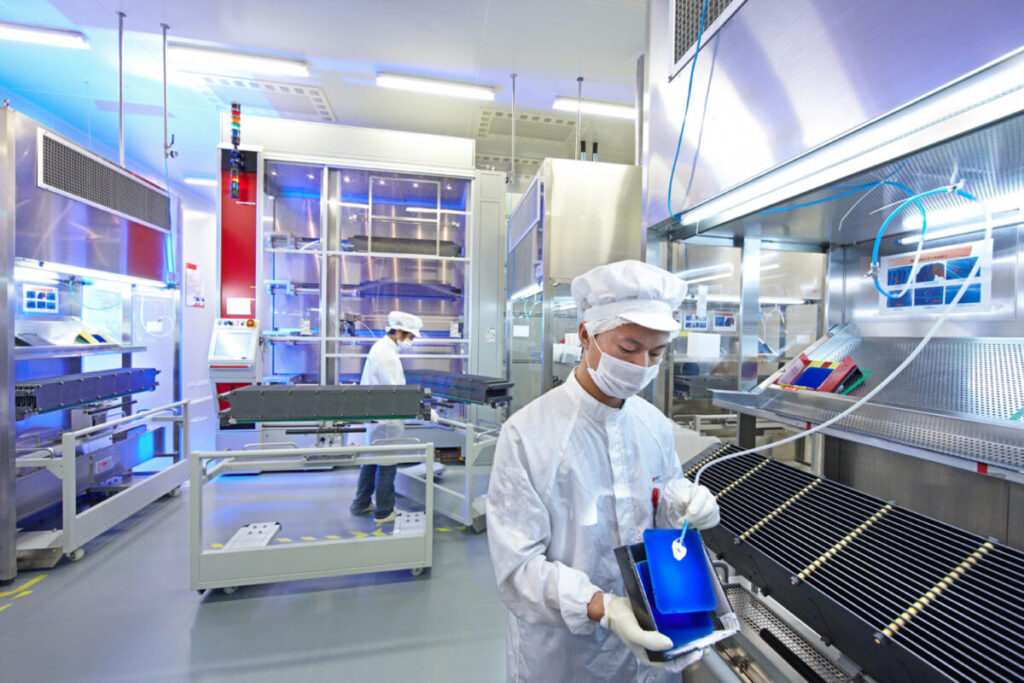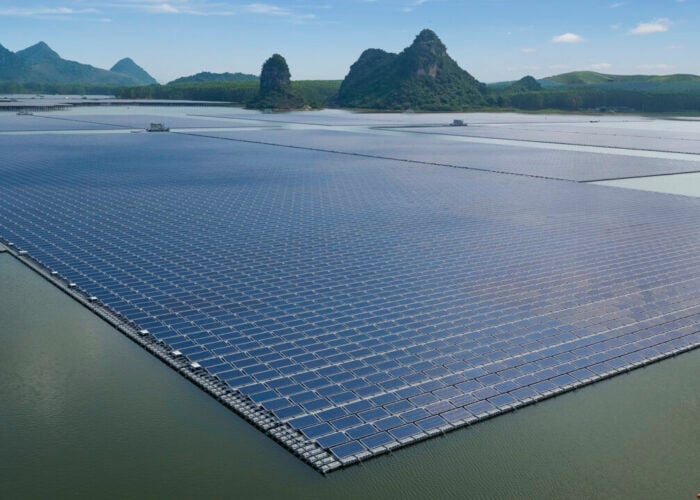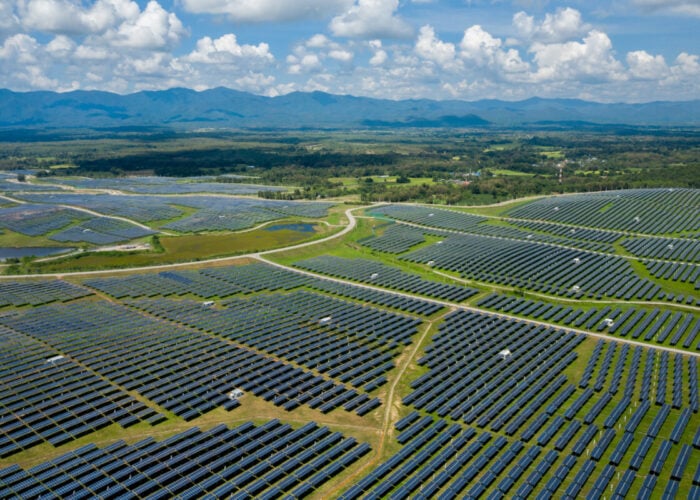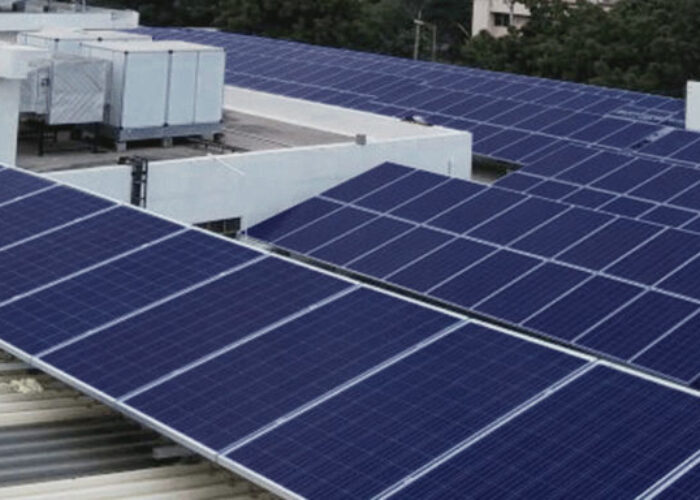
A new report from think tank Ember Climate has found that cumulative global solar manufacturing capacity will almost double cumulative global solar deployment by 2030, and suggests that much of this “spare” manufacturing capacity could be used to help improve access to electricity in the Global South.
The report, ‘China’s “spare” solar capacity offers climate and energy access opportunity,’ forecasts global solar deployments to reach 3,473GW between 2024 and 2030, compared to around 7,310GW in solar manufacturing capacity over this period.
Unlock unlimited access for 12 whole months of distinctive global analysis
Photovoltaics International is now included.
- Regular insight and analysis of the industry’s biggest developments
- In-depth interviews with the industry’s leading figures
- Unlimited digital access to the PV Tech Power journal catalogue
- Unlimited digital access to the Photovoltaics International journal catalogue
- Access to more than 1,000 technical papers
- Discounts on Solar Media’s portfolio of events, in-person and virtual
As a result, more than half of the world’s solar capacity – 3,837GW – is set to go unused, the “spare” capacity in the report’s title, drawing a clear distinction between the world’s ambitious solar manufacturing programmes, and relatively lacking deployment initiatives.
For instance, the report notes that even the world’s most ambitious climate targets will fall short of the plan to triple global renewable power capacity by 2030, a target set by the world’s governments at the COP28 climate summit in 2023. The most ambitious national targets will see 9,513GW of new solar capacity deployed by the end of the decade, while Ember notes that meeting the UN targets would require the addition of 11,000GW.
Should the world deploy the 3,837GW of “spare” capacity, however, the world will meet the UN renewable power targets as early as 2029, and be on track to deploy a massive 13,345GW of solar capacity by 2030, exceeding the UN target by 21%.
China continues to dominate capacity additions
The global solar sector has experienced a manufacturing boom in recent years, with Ember noting that, between 2021 and 2023, manufacturing capacity tripled, and is set to reach 1,100GW per year by the end of this year. The vast majority of this manufacturing capacity is located in China, which Ember notes is responsible for as much as 85% of the world’s solar PV manufacturing capacity.
A report published last year by Wood Mackenzie noted that China is on pace to single-handedly meet the world’s demand for new solar modules by 2032, and is forecast to account for 95% of global n-type cell manufacturing capacity as early as 2026. The graph below, adapted from the Ember report, demonstrates how this significant oversupply compares to the predicted under-deployment in the solar sector.
Much of this under-deployment stems from struggles in many of the world’s energy grids, with a number of grid systems around the world struggling to put new solar panels into use. Europe, for instance, is thought to lack around 200GW of grid capacity for solar alone, while the grid connection backlog in the US increased by 27% year-on-year between 2022 and 2023, with around 2.6TW of renewable energy generation and storage now waiting for grid availability.
This over-supply and under-capacity has also had an impact on the manufacturers themselves, with some companies not eager to produce modules at a time where there is little demand for yet more panels. Ember reports that in the first quarter of this year, Chinese companies have cancelled or delayed around US$8.3 billion of planned manufacturing investments, and if this lack of appetite for consumption continues, there will be questions about the long-term viability of much of the world’s operational manufacturing capacity.
Developing overseas markets
The Ember report, however, notes that growing the solar sector in the Global South, could help alleviate this mismatch of manufacturing and deployment, and create new markets to which manufacturers can sell products, which will benefit the supply chain as a whole.
“Now, the real issue faced by the industry is not over-supply but under-deployment,” explains Dr Muyi Yang, senior electricity policy analyst for China at Ember, and one of the authors of the report. “With that in mind, the solution to support the industry resides in markets overseas, especially in the developing world.
“Investing in these markets will ensure that factories stay open during this difficult period while also helping developing countries with their own clean energy transitions. The diplomatic and economic stars are aligned.”
The Ember report suggests that deploying the entirety of the world’s spare solar manufacturing capacity could extend access to electricity to 809 million people, many of whom live in poorer countries. The report draws together 88 countries from three blocs – the Least Developed Countries, Alliance of Small Island States and Climate Vulnerable Forum – and forecasts that meeting the growing energy demand of these countries until 2030 would require the addition of just 454GW of solar capacity, around one-eighth of the total spare manufacturing capacity Ember forecasts.
Some of these 88 countries do not have access to electricity for 100% of their citizens, such as South Sudan, where just 8% of the population have access to electricity. The Ember report assessed how solar deployment demand could change, assuming that each of these countries’ access to electricity is increased to 100%, and found that this would add just 112GW of solar deployment demand.
This means that meeting the forecast growth of electricity demand of all 88 countries, and expanding their energy sectors so that all citizens have access to electricity, would require just 566GW of new solar installations.
Successfully deploying solar panels in these markets will help the world meet its climate targets, and improve access to electricity, an important part of the ‘just transition’ philosophy, which aims to improve access to power amid the decarbonisation of the world’s energy mix. Last year, Máté Heisz, director of global affairs at SolarPower Europe, pointed to the importance of delivering such a just transition in response to renewable power targets set by the International Energy Agency at COP28.
“The specific inclusion of solar, wind and storage for the first time signifies the critical role renewables must play in delivering a clean, and just energy transition this decade,” Heisz said.







